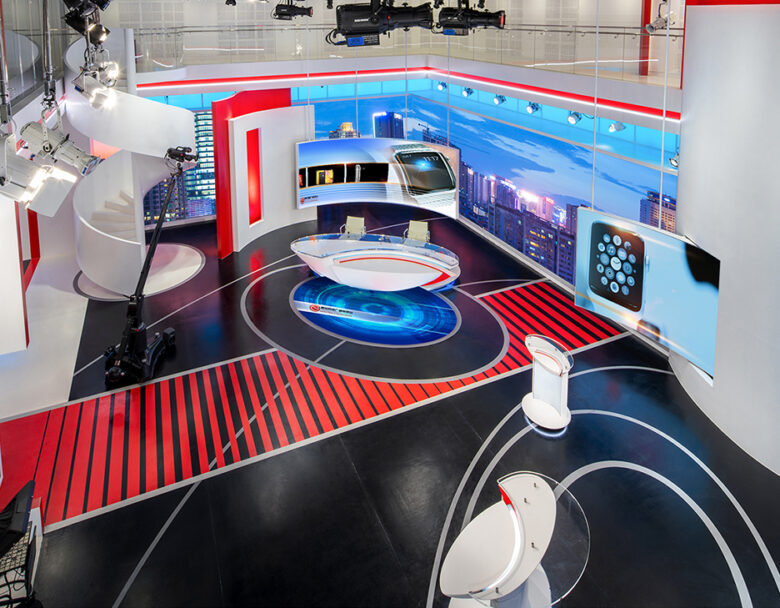Clickspring Design Pilots Technologies and Workflows; Adapting to Broadcast in the Covid-19 Era
Adaptation
Adaptation defined us in 2020.
Opportunities that seemed certain were suddenly in limbo, and projects already under construction around the world were introduced to myriad logistical challenges as schedules and budgets simultaneously grew tighter and less predictable.
Finding new ways to coordinate with our partners and clients became critical as creative problem solving became the only way to address changing workflows required to meet our goals.
Chicago’s News Nation and China’s Guizhou Radio and Television Network (GZTV) are two examples of standout corporate interior and broadcast projects we launched in 2020, each utilizing remote workflows to deliver the high-performing environments.
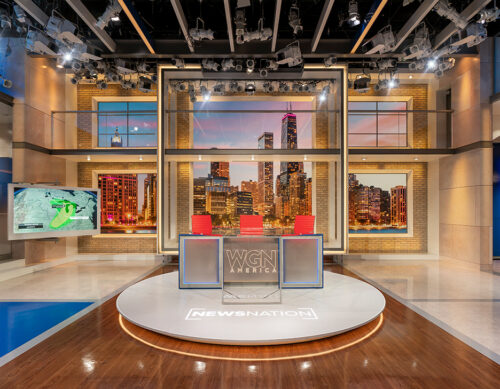
Concept work for News Nation’s sprawling studio and newsroom began in January, aiming to showcase a large, 360 degree broadcast space and a “future proofed” newsroom by early July.
The scale of the design brief called for the highest caliber applications of automated LED display technologies, lighting controls, luminaries, cameras to maximize the flexibility of the shooting plan.
By March, COVID-19 had asserted itself on the world, and it became clear that the project’s aggressive goals would need to be evaluated through a new lens.
Clickspring’s Chief Creative Officer, Emmett Aiello, reflects on the project:
“We responded quickly with safety and contingency plans and also got lucky. Supply chain delays didn’t hurt us as much as we thought they would and, more importantly, our partners stayed healthy. More than anything, we had good people on this team.”
Naturally, Zoom became a critical tool that made remote, daily workflows manageable and clear.
Virtual design workshops and presentations became the norm in favor of our traditional practice of intimate, hands-on design sessions.
Aiello continues:
“Our client had the vision needed to guide this huge project while recognizing practical hurdles and putting up with our endless requests for Zoom meetings about micro details like chair color and cable management.”
A process that previously involved spontaneous office pinups and over-the-shoulder collaboration between designers shifted into structured meetings and focused groupthinks – usually while keeping our fingers crossed that our internet connections held steady…
“We had an excellent lighting team in Eastern Lighting Design, who we often partner with, as well as technology partners AOTO and McCann Systems. Daylighting control was provided by Broadcast Blinds, and Bramco, Inc. and REES Architects provided general contracting and architectural expertise, respectively. We also had two of the best scenic fabricators in the country, Chicago Scenic Studios and Showman Fabricators, splitting the fabrication scope, which was the only way to get it done on schedule. They coordinated flawlessly, which is near to impossible on a 360 degree set where you are divvying up areas, but it all has to fit and meet cleanly at the seams.”
Behind the scenes, Adrienne Kapalko, Chief Operations Officer, remotely coordinated a broad and highly specialized team while also developing and implementing Clickspring’s stringent onsite protocols that ensured the safety of our personnel and team members.
These precautions included limiting access to spaces, enforcing PPE and mask requirements, and researching and adhering to local labor laws, as well as our client’s own facility guidelines.
Prioritizing safety without losing sight of the project goals was no small feat, and Kapalko accomplished these critical tasks while also maintaining a transparent budget and taut schedule.
Privately hosted YouTube livestreams allowed the hanging and focusing of lighting instruments to happen remotely, allowing our teams to view camera shots, talent blocking, and scenic adjustments made during rehearsals in real time. This allowed us to maintain the highest standard of design and project oversight despite the necessary geographic distance.
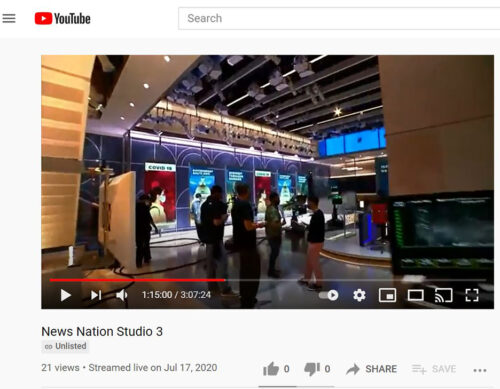
This remote workflow was also deployed for Guizhou Radio and Television Network (GZTV) in Guizhou, China.
Totaling approximately 500 sq meters (approximately 5,400 sq feet) and incorporating a sweeping mezzanine catwalk, spiral staircase, three separate anchor desks, and an integrated flash studio, the facility’s program was comprehensive and technically complex.
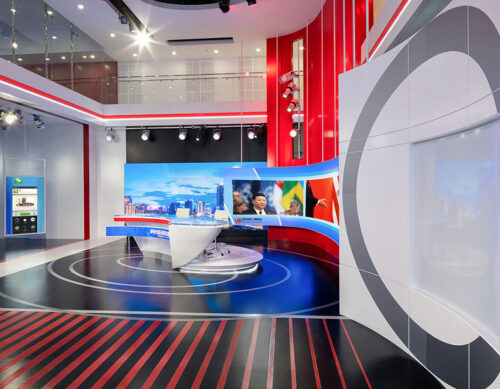
With the help of our domestic and international partners, the project team stayed nimble and flexible, especially during the scenic fabrication process. As the construction happened locally to the project, in-person observation and normally scheduled quality-control checks were not possible.
In response, our Beijing-based project managers helped coordinate a fully digital observation process that made extensive use of mobile communication tools, such as WeChat. This small, experienced onsite group helped our decentralized team maintain momentum and respond to challenges quickly despite bridging time zones spanning from Beijing throughout the entirety of the continental United States.
Mick Smith, Vice President of Design of Eastern Lighting Design, highlights the helpfulness of reviewing real time camera feeds through Zoom:
It was definitely interesting … the plan of attack was to review the lights position by position. They would point the broadcast cameras at where we would be hanging lights and I would follow along and give them a “yes” or “no” or any feedback, and we ended up sticking to the positions we specified in advance.”
Other tasks that would typically be performed by ELD’s onsite team were managed and delegated to local lighting technicians. These tasks included programming DMX addresses for each fixture and diagramming its connection to the control system, for example.
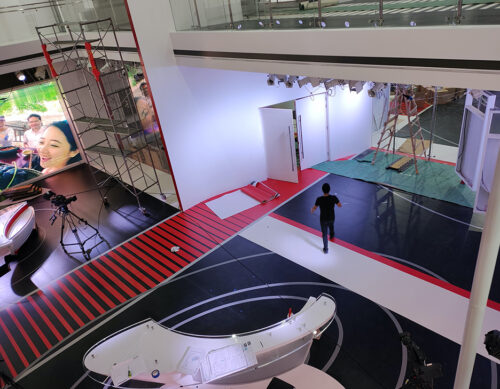
When lacking direct access to the project site, it naturally takes longer to solicit detailed and thoughtful feedback relating to scenic configurations, camera blocking, sightlines, and lighting cues.
As a result, time became one of the project’s most valuable resources.
The daily project schedule was defined by the need to maintain constant communication between a team that included designers, project managers, program directors, technicians, and broadcast presenters. With so much extra time necessary for careful, distanced communication, this meant there was even less time for critical production and installation work among the various trades.
Nevertheless, the project launched on schedule, a testament to the talent and endurance of all parties involved.
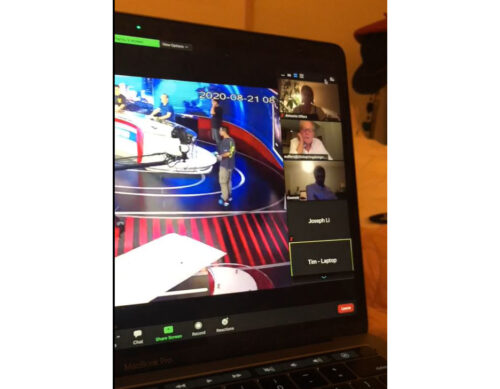
During the sustained challenges presented by our rapidly changing world, our commitment to adaptation is what enables us to continue delivering cutting-edge broadcast spaces and branded environments.
Flexibility in our methods, and the willingness to pilot new approaches with our partners and clients, are what made each of these projects possible.
We’re eager to get back to workflows that bring back the face-to-face problem solving we love, but until that day we’re ready to tackle our next operational challenge with the same creativity that has produced some of the most recognizable environments in the world.
What can we build together next?
